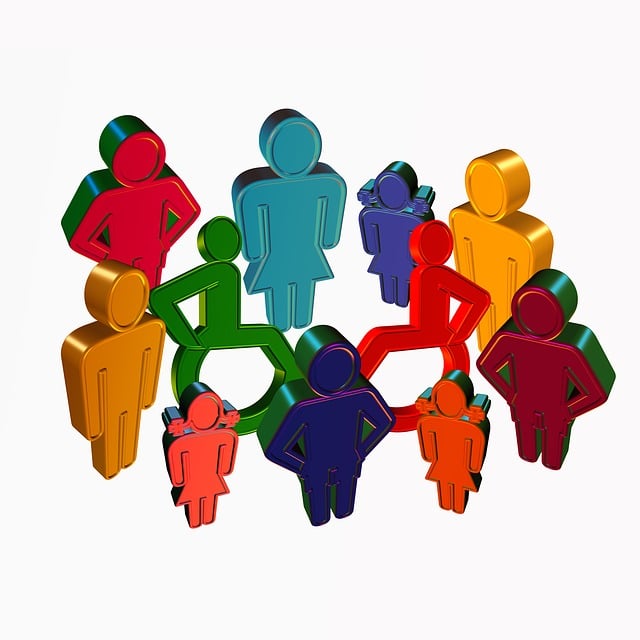Have you ever found yourself amidst a brainstorming session, only to feel like your creative juices are being squeezed dry? If so, you’re not alone. Brainstorming has become a buzzword in the world of ideation, promising a deluge of innovative ideas. However, beneath this seemingly magical approach lies a plethora of misconceptions that often sabotage our creative potential. In this article, we seek to set the record straight and debunk some of the most widespread myths surrounding brainstorming. So, grab your thinking cap and get ready for a journey through the truth behind this popular brainstorming technique.
Contents
- The Benefits of Brainstorming: Debunking Misconceptions
- Brainstorming: A Collaborative Approach to Problem-Solving
- Dispelling the Myth of Individual Brilliance in Brainstorming
- Inclusive Brainstorming: Embracing Diverse Perspectives
- The Role of a Facilitator: Guiding Successful Brainstorming Sessions
- Quality Over Quantity: Rethinking the Success of Brainstorming
- Effective Brainstorming Techniques: Moving Beyond Traditional Methods
- Overcoming Challenges in Brainstorming: Strategies for Success
- Frequently Asked Questions
- In Retrospect
The Benefits of Brainstorming: Debunking Misconceptions
Brainstorming is a highly effective technique for generating creative ideas and finding innovative solutions to problems. Despite its proven track record, there are several misconceptions surrounding brainstorming that need to be debunked. One common misconception is that brainstorming is a waste of time, as it can result in unproductive discussions. However, brainstorming sessions, when properly conducted, can actually foster a collaborative environment where valuable insights are shared and diverse perspectives are considered.
Another misconception is that brainstorming is only suitable for certain types of projects or industries. In reality, brainstorming can be applied to any situation that requires creative thinking. Whether you’re developing a marketing campaign, solving a complex business challenge, or even planning a weekend getaway, brainstorming can help you tap into your collective intelligence and come up with fresh ideas. Moreover, it encourages active participation and engagement from all team members, allowing everyone to feel heard and valued.
Brainstorming: A Collaborative Approach to Problem-Solving
When it comes to problem-solving, sometimes two heads are better than one. Brainstorming is a collaborative approach that aims to generate a multitude of ideas to tackle a problem or find innovative solutions. By bringing together a diverse group of individuals, each with their own unique perspectives and insights, brainstorming fosters an environment that encourages creativity and out-of-the-box thinking.
During a brainstorming session, participants are encouraged to freely express their ideas without fear of judgment or criticism. This allows for a free flow of thoughts, enabling individuals to build upon each other’s ideas and come up with novel solutions. It’s important to create an open and inclusive atmosphere where individuals feel comfortable contributing their thoughts, no matter how unconventional they may seem. The power of brainstorming lies in its ability to break down barriers and inspire collaborative problem-solving.
- Brainstorming encourages thinking outside the box.
- It promotes diverse perspectives and insights.
- Participants feel valued and included.
- Ideas can be built upon and improved collectively.
- Creativity and innovation are stimulated.
In conclusion, brainstorming is a powerful collaborative approach that fuels problem-solving and sparks creativity. By harnessing the collective intelligence of a group, brainstorming sessions generate a wide range of ideas that can lead to breakthrough solutions. So, gather your team, create a welcoming space, and let the ideas flow!
Dispelling the Myth of Individual Brilliance in Brainstorming
Brainstorming sessions are often believed to be most successful when dominated by individuals with exceptional creative abilities. However, this conventional wisdom is actually a myth that overlooks the power of collaborative thinking. When it comes to generating innovative ideas, the collective intelligence of a diverse group can far outweigh the individual brilliance of a single mind.
In a truly effective brainstorming session, the focus should shift from seeking individual breakthroughs to fostering a collaborative environment. Encouraging open dialogue and valuing the perspectives of all participants allows for a broader range of ideas to emerge. By leveraging the unique strengths of each team member, collectively we can overcome cognitive biases and delve into unexplored territories of creativity. Through this collaborative process, we create a melting pot of thoughts, experiences, and expertise that fuels ideation and innovation like never before.
Inclusive Brainstorming: Embracing Diverse Perspectives
When it comes to brainstorming, it’s important to create an environment that welcomes and celebrates diverse perspectives. Inclusive brainstorming allows us to tap into the power of collective thinking, bringing together individuals with unique insights, backgrounds, and experiences. By embracing this approach, we can unlock a wealth of creativity and foster innovation in ways we never thought possible.
So, how can we ensure that our brainstorming sessions are truly inclusive? First and foremost, we must establish psychological safety, where everyone feels comfortable and encouraged to share their ideas openly. Creating an atmosphere of respect and trust ensures that all voices are heard and valued. Not only does this result in a more enriching experience for each participant, but it also broadens the range of ideas generated.
- Encourage diversity: Actively invite individuals from different departments, disciplines, and backgrounds to participate. Seek representation across genders, age groups, and cultural backgrounds.
- Provide multiple communication avenues: Allow for various means of contribution, be it in-person discussions, virtual collaboration tools, or even anonymous idea submission platforms, enabling introverted team members to contribute comfortably.
- Emphasize active listening: Encourage participants to listen attentively to one another, promoting deep understanding and empathy. This ensures that insights from diverse perspectives are not only heard but also genuinely considered in the brainstorming process.
The Role of a Facilitator: Guiding Successful Brainstorming Sessions
When it comes to successful brainstorming sessions, a skilled facilitator plays a crucial role in guiding the process and ensuring that creative ideas flow freely. A facilitator acts as a neutral party, creating a safe and open environment where team members can express their thoughts without judgment. By encouraging collaboration and actively listening to participants, a facilitator helps to foster innovative thinking and constructive discussions.
One of the key responsibilities of a facilitator is to set clear objectives for the brainstorming session. By defining the goals and desired outcomes upfront, the facilitator provides a sense of direction and purpose to the team. This helps participants stay focused and ensures that their ideas align with the overall objective. Additionally, a facilitator can use various techniques to stimulate creativity during brainstorming sessions, such as brainstorming games, mind mapping, or role-playing exercises. These activities help to generate fresh perspectives and inspire out-of-the-box thinking among participants.
- Act as a neutral party and create a safe environment.
- Encourage collaboration and active listening.
- Set clear objectives for the session.
- Use techniques like brainstorming games or mind mapping to stimulate creativity.
A skilled facilitator is also adept at managing group dynamics. By paying attention to the dynamics within the team, a facilitator can identify potential conflicts and address them promptly. This ensures that the brainstorming session remains focused, respectful, and productive. Moreover, a facilitator should be skilled in guiding the conversation towards actionable ideas. They should be able to facilitate discussions that lead to concrete next steps and solutions, rather than just generating a list of ideas that never get implemented. With their guidance, a facilitator turns a simple brainstorming session into a valuable tool for problem-solving and innovation.
- Manage group dynamics and address conflicts.
- Guide the conversation towards actionable ideas.
- Facilitate discussions that lead to concrete next steps and solutions.
Quality Over Quantity: Rethinking the Success of Brainstorming
When it comes to brainstorming, we often hear the adage “the more ideas, the better.” However, recent studies challenge this notion, suggesting that quality should be given greater importance than quantity. Traditional brainstorming sessions tend to focus on generating as many ideas as possible, but unfortunately, this often leads to a lack of depth and innovative thinking. By shifting our perspective and emphasizing the quality of ideas rather than the quantity, we can unlock the true potential of brainstorming.
One key aspect to consider is the importance of creating an environment where everyone feels comfortable sharing their unique perspectives. Encouraging participants to think outside the box and providing equal opportunities for contribution fosters a diverse range of ideas. Moreover, it is crucial to create an atmosphere that values active listening and constructive feedback. This feedback helps refine ideas and contributes to the overall quality of the brainstorming session. By adopting a quality-oriented mindset and fostering an inclusive atmosphere, we can revolutionize the way we approach brainstorming, paving the way for innovative and impactful solutions.
Effective Brainstorming Techniques: Moving Beyond Traditional Methods
In order to maximize creativity and innovation, it is crucial to go beyond traditional brainstorming methods. While traditional approaches have their merits, incorporating new techniques can take your brainstorming sessions to the next level. Here are some alternative methods that will ignite fresh ideas and foster collaboration:
- Mind Mapping: Instead of linear thinking, try creating a visual representation of ideas using a mind map. Start by jotting down a central theme or problem, and then branch out with related thoughts and concepts. This technique encourages non-linear thinking and helps in connecting various elements for a more comprehensive brainstorming session.
- Rolestorming: Put yourself in someone else’s shoes for a change. In rolestorming, participants adopt the perspective of a specific individual, fictional character, or even an inanimate object related to the problem at hand. By thinking from different viewpoints, fresh insights emerge, leading to more diverse and original ideas.
- SCAMPER: This acronym stands for Substitute, Combine, Adapt, Modify, Put to another use, Eliminate, and Reverse. SCAMPER is a powerful technique to challenge existing ideas and encourage innovative thinking. By systematically applying these actions to your idea or problem, you can uncover new possibilities and approaches.
By embracing these alternative brainstorming techniques, you can supercharge your creative sessions and stimulate a true flow of ideas. Remember, each method serves a unique purpose, and combining them can enhance the effectiveness of your brainstorming sessions. So let go of convention, experiment with these approaches, and watch your creativity soar to new heights!
Overcoming Challenges in Brainstorming: Strategies for Success
Brainstorming is an essential part of the creative process, yet it can often be challenging to generate innovative ideas and overcome mental blocks. However, with the right strategies and approach, you can unlock your team’s full creative potential. Here are some effective techniques that will help you overcome challenges in brainstorming:
- Create a judgment-free environment: Encourage an open and inclusive atmosphere where everyone feels comfortable sharing their ideas without the fear of criticism. By removing the fear of judgment, team members are more likely to think outside the box and express their thoughts freely.
- Set clear goals and objectives: Clearly define the purpose and desired outcomes of the brainstorming session. Having a specific focus will help the team stay on track and channel their ideas towards a common goal. Keep in mind that vague or ambiguous goals might hinder creative thinking.
- Utilize diverse perspectives: A valuable asset in brainstorming is a diverse group of individuals who bring different backgrounds, experiences, and ideas to the table. Encourage participants to share their unique viewpoints and collaborate with one another. Embracing diversity fosters a rich exchange of ideas and enhances the likelihood of generating innovative solutions.
Moreover, try implementing time limitations to keep the energy level high and maintain focus. Another technique to overcome challenges is the “brainwriting” method, where each participant writes down their ideas silently before group discussion. This approach eliminates the dominance of vocal team members and allows for equal participation. Additionally, visual aids, such as mind maps or concept sketches, can serve as effective tools to stimulate creativity and generate new ideas during brainstorming sessions. By employing these strategies, you can conquer the obstacles that hinder brainstorming and pave the way for successful and fruitful collaboration.
Frequently Asked Questions
Q: What is brainstorming?
A: Brainstorming is a creative problem-solving technique used to generate a large number of ideas in a short period of time. It is a group activity that encourages participants to share their thoughts, suggestions, and insights, without judgment or criticism.
Q: Why is brainstorming important?
A: Brainstorming is vital because it promotes collaboration and helps in generating innovative solutions. It encourages everyone to contribute, fostering teamwork and diversity of ideas. Brainstorming can lead to breakthroughs and new perspectives, enhancing the overall creative process.
Q: Is it true that brainstorming sessions should only be conducted in person?
A: Not necessarily. While face-to-face brainstorming sessions have been the norm, virtual brainstorming has become increasingly popular due to the rise of remote work. Online tools and platforms now allow teams to collaborate effectively, regardless of their physical locations.
Q: Are there any specific rules that need to be followed during a brainstorming session?
A: Yes, there are a few guidelines that can enhance the effectiveness of a brainstorming session. These include encouraging participants to defer judgment, build on others’ ideas, think outside the box, and avoid distractions. Additionally, it is crucial to establish a safe and inclusive environment where everyone feels comfortable sharing their thoughts.
Q: Does brainstorming always have to be done in a group?
A: No, brainstorming can also be done individually. Called “solo brainstorming” or “brainwriting,” this technique involves individuals jotting down their ideas independently. These ideas can later be shared and discussed with a group, helping to stimulate further ideas and collaborations.
Q: Can brainstorming be effective for all types of problems?
A: While brainstorming is a versatile technique, it may not be the most suitable approach for every problem. Brainstorming is particularly effective for generating a broad range of ideas and exploring different possibilities. However, for complex problem-solving or when in-depth analysis is required, other methods might be more appropriate.
Q: Should the evaluation of ideas be done during or after brainstorming?
A: It is generally recommended to defer judgment and evaluation of ideas until after the brainstorming session. Focusing on judgment during the session can hinder the creative flow and discourage participants from sharing their ideas fearlessly. Evaluation can be conducted in a separate session to ensure a more comprehensive and thoughtful assessment of the ideas generated.
Q: Can brainstorming sessions become unproductive due to dominant voices or groupthink?
A: Yes, it is possible for dominant voices or groupthink to hinder the effectiveness of a brainstorming session. To counter this, facilitators should actively encourage participation from all members and create an inclusive environment where everyone feels valued. Utilizing techniques like round-robin or anonymous idea submission can also help prevent dominant voices from overshadowing others and foster equal participation.
Q: Are there any alternatives to traditional brainstorming?
A: Yes, there are alternative methods that can be employed alongside or instead of traditional brainstorming. Some of these include brainwriting, mind mapping, SCAMPER technique, or the six thinking hats. These approaches offer different ways to stimulate creativity and generate ideas, depending on the nature of the problem at hand.
Q: How can companies create a culture of effective brainstorming?
A: Companies can foster a culture of effective brainstorming by encouraging open communication, promoting psychological safety, and providing regular training on brainstorming techniques. Establishing a clear purpose for brainstorming sessions, celebrating diverse perspectives, and implementing constructive feedback channels can also contribute to a more innovative and collaborative work environment.
In Retrospect
In conclusion, debunking the common misconceptions about brainstorming is crucial to fostering creative collaboration and maximizing its potential.







